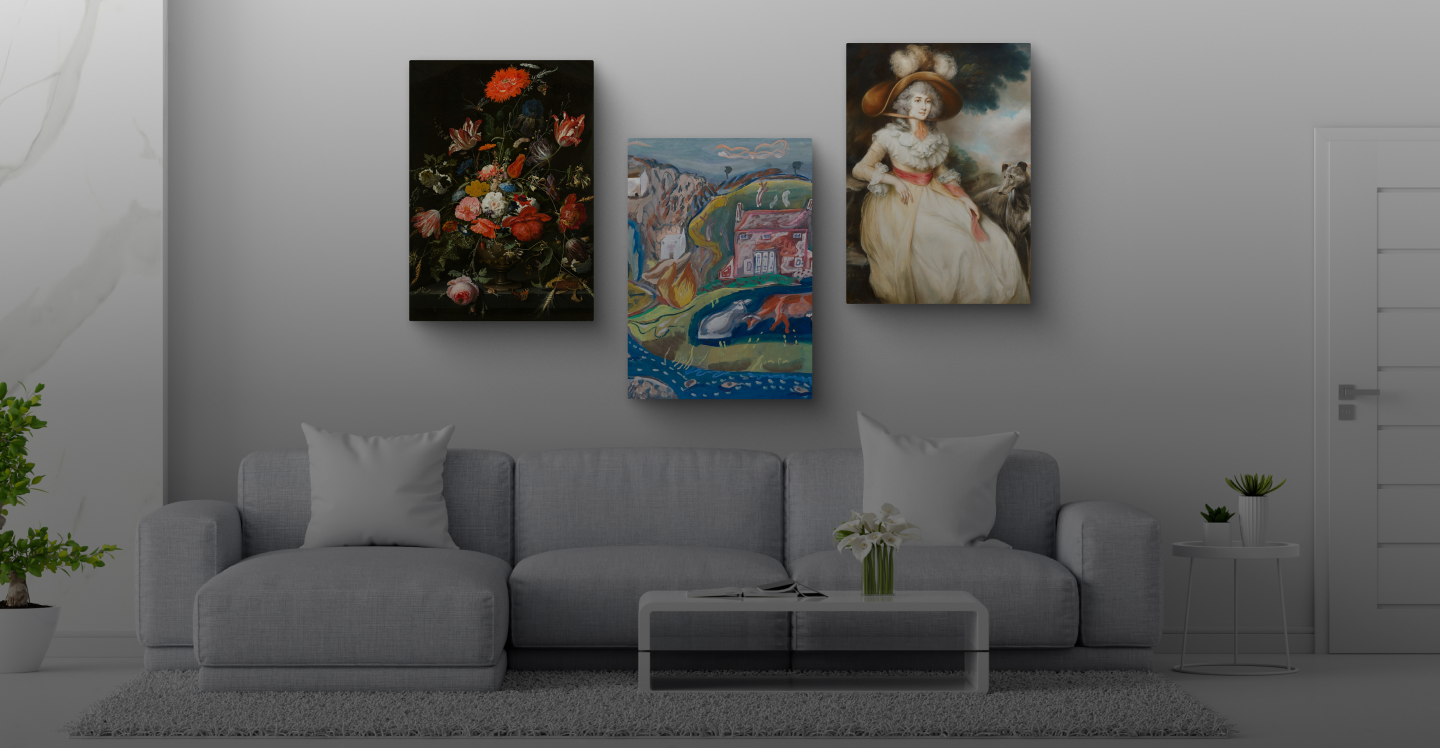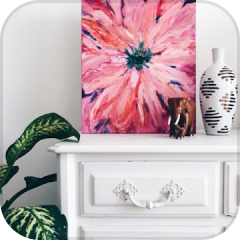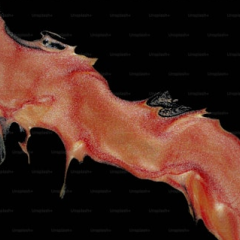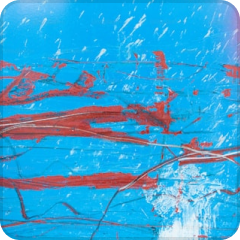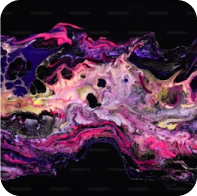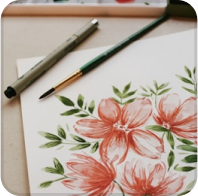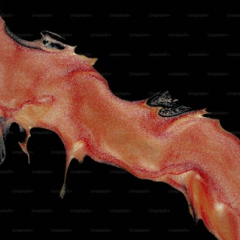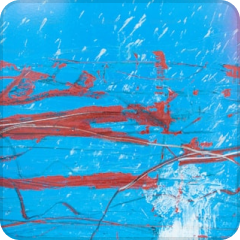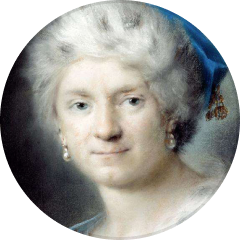





Top Categories
Transform Your Space with Personalized Art Prints
Bring your walls to life with premium, customizable canvas prints. Whether it’s your favorite memories or inspiring art, Zebaco makes it easy to create beautiful, durable pieces that reflect your style.

High-Quality Prints

Affordable Custom Art

100% Satisfaction
What’s On Sale
What Our Customers are Saying


Oliver Stone
"I recently purchased a stunning canvas from Zebaco, and I couldn't be happier with my choice! The vibrant colors and exquisite detail have truly transformed my living room. “


Amelia Rivers
"I recently purchased a stunning canvas from Zebaco, and I couldn't be happier with my choice! The vibrant colors and exquisite detail have truly transformed my living room. “


Ethan Hawke
"I recently purchased a stunning canvas from Zebaco, and I couldn't be happier with my choice! The vibrant colors and exquisite detail have truly transformed my living room. “


Sophia Bennett
"I recently purchased a stunning canvas from Zebaco, and I couldn't be happier with my choice! The vibrant colors and exquisite detail have truly transformed my living room. “


Sophia Bennett
"I recently purchased a stunning canvas from Zebaco, and I couldn't be happier with my choice! The vibrant colors and exquisite detail have truly transformed my living room. “
Revolutionizing Interior Spaces: The Complete Guide to Photo & Wall Pictures Tiles for Transformation
Transform your living space into a personalized sanctuary with the innovative concept of photo and picture tiles for wall decoration. These remarkable decorative elements represent a paradigm shift in how we approach interior design, offering unprecedented flexibility and aesthetic appeal. Unlike traditional framed photographs or static wall hangings, picture tiles provide dynamic solutions that evolve with your lifestyle and preferences.
The contemporary home requires adaptable design elements that reflect personal narratives while maintaining sophisticated visual appeal. Picture tiles fulfill this requirement by combining cutting-edge printing methodologies with user-friendly mounting systems. These innovative wall coverings utilize lightweight materials that eliminate the burden of heavy installations while delivering museum-quality imagery that captivates viewers and sparks meaningful conversations.
Modern homeowners increasingly seek versatile decorating solutions that accommodate changing tastes and evolving family dynamics. Picture tiles address this need by offering removable and repositionable designs that adapt to new preferences without damaging wall surfaces. The adhesive backing systems employed in these products utilize advanced polymer compounds that ensure secure mounting while permitting effortless repositioning when desired.
The manufacturing process behind picture tiles involves sophisticated printing methodologies that preserve image clarity and color vibrancy over extended periods. Premium substrate materials resist fading, moisture damage, and environmental stressors that typically compromise traditional photographic prints. This durability ensures that your investment in wall decor maintains its visual impact for years to come.
Contemporary interior design philosophy emphasizes the importance of personal expression within living spaces. Picture tiles serve as powerful vehicles for storytelling, allowing residents to curate visual narratives that reflect their experiences, aspirations, and relationships. Whether showcasing family milestones, travel adventures, or artistic pursuits, these decorative elements transform ordinary walls into meaningful focal points that resonate with both inhabitants and visitors.
The versatility of picture tiles extends beyond simple photographic displays. These innovative products accommodate various artistic styles, from minimalist compositions to maximalist arrangements. The modular nature of tile systems enables users to experiment with different configurations, creating unique installations that evolve organically over time. This flexibility encourages ongoing creativity and prevents the stagnation often associated with permanent wall treatments.
Revolutionary Material Science Behind Wall Picture Tiles
Understanding the sophisticated engineering that underlies picture tiles enhances appreciation for their remarkable performance characteristics. These products utilize advanced substrate materials specifically formulated to withstand environmental challenges while maintaining pristine visual quality. The base materials typically consist of lightweight aluminum composites or high-density polymer systems that provide structural integrity without excessive weight.
Surface treatment processes play crucial roles in determining the longevity and visual appeal of picture tiles. Specialized coating systems protect underlying substrates from moisture penetration, ultraviolet radiation, and chemical exposure. These protective layers utilize nanotechnology principles to create invisible barriers that preserve image quality while maintaining natural surface textures that enhance tactile experiences.
The printing processes employed in picture tile manufacturing represent significant advancements in digital imaging reproduction. Sublimation printing methodologies enable the permanent bonding of inks with substrate materials, creating fade-resistant images that maintain their vibrancy under challenging environmental conditions. This process eliminates the risk of image separation or peeling that commonly affects inferior wall decoration products.
Adhesive systems incorporated into picture tiles utilize pressure-sensitive compounds that form strong bonds with wall surfaces while remaining removable when necessary. These adhesives undergo rigorous testing to ensure compatibility with various wall finishes, including painted surfaces, textured wallpapers, and sealed masonry. The removal process leaves no residue or surface damage, making picture tiles ideal for rental properties or frequently redesigned spaces.
Quality control measures implemented during manufacturing ensure consistent performance across entire product lines. Each tile undergoes comprehensive testing for color accuracy, adhesive strength, and durability parameters. These stringent standards guarantee that customers receive products that meet or exceed performance expectations while maintaining competitive pricing structures.
Environmental considerations increasingly influence material selection and manufacturing processes. Many picture tile manufacturers prioritize sustainable practices by utilizing recycled substrates, eco-friendly inks, and minimal packaging materials. These initiatives reduce environmental impact while delivering products that align with contemporary values regarding responsible consumption and environmental stewardship.
Transformative Design Possibilities with Picture Tiles
The design potential of picture tiles extends far beyond simple photographic displays, encompassing artistic installations that rival professional gallery presentations. These versatile decorative elements enable the creation of sophisticated visual compositions that enhance any interior environment. Understanding the various design approaches available empowers homeowners to make informed decisions that align with their aesthetic preferences and functional requirements.
Geometric arrangements represent one of the most popular approaches to picture tile installation. These systematic layouts utilize mathematical principles to create visually pleasing compositions that demonstrate order and intentionality. Square grids, rectangular matrices, and diamond patterns offer different visual effects while maintaining cohesive appearances that complement contemporary interior design philosophies.
Organic arrangements provide alternatives to rigid geometric systems by embracing natural flow patterns and asymmetrical compositions. These layouts mimic natural phenomena such as flowing water, scattered leaves, or crystalline formations. Organic arrangements often prove more challenging to execute but yield distinctive results that capture attention and stimulate visual interest through their unexpected configurations.
Color coordination strategies significantly influence the overall impact of picture tile installations. Monochromatic schemes utilize variations of single colors to create subtle yet sophisticated displays that complement existing decor without overwhelming adjacent design elements. Complementary color strategies employ opposing hues to generate dynamic contrasts that energize spaces and create memorable focal points.
Thematic groupings enable the creation of narrative-driven displays that tell stories through carefully curated image selections. Travel collections, family progressions, seasonal celebrations, and hobby showcases represent popular thematic approaches that resonate with viewers on emotional levels. These installations transform walls into personal museums that celebrate individual experiences and relationships.
Scale variations within picture tile arrangements add depth and visual interest to installations. Combining tiles of different dimensions creates hierarchical compositions that guide viewer attention toward featured images while maintaining overall cohesion. Strategic placement of larger tiles as anchor points provides structural foundations for surrounding smaller elements.
Layering concepts introduce three-dimensional qualities to picture tile installations. By varying mounting depths or incorporating shadow boxes, designers create installations that project from wall surfaces, casting interesting shadows and adding sculptural qualities to photographic displays. These approaches transform flat wall surfaces into dynamic architectural features.
Selecting Optimal Locations for Picture Tile Installations
Strategic placement of picture tiles maximizes their visual impact while ensuring compatibility with existing architectural features and furniture arrangements. Understanding the relationship between lighting conditions, traffic patterns, and viewing angles enables informed decision-making that enhances the effectiveness of wall decoration projects.
Lighting considerations play fundamental roles in determining optimal placement locations for picture tiles. Natural lighting from windows and skylights can enhance image clarity and color vibrancy during daylight hours, but may also introduce challenges related to glare and ultraviolet exposure. Artificial lighting systems require careful consideration to avoid unwanted reflections while ensuring adequate illumination for comfortable viewing.
Traffic flow patterns within living spaces influence how picture tile installations are perceived and appreciated. High-traffic areas such as hallways, staircases, and entryways provide excellent opportunities for creating impactful displays that capture attention from multiple viewing angles. However, these locations also present challenges related to potential damage from passing individuals or moving objects.
Furniture relationships must be considered when planning picture tile installations to ensure harmonious integration with existing room layouts. Wall-mounted displays should complement rather than compete with furniture pieces, creating balanced compositions that enhance overall room aesthetics. Consideration of furniture heights, proportions, and visual weights prevents conflicting design elements that diminish the impact of both furniture and wall decorations.
Architectural features such as windows, doors, built-in shelving, and structural elements provide natural frameworks for picture tile arrangements. These existing features can serve as anchor points or boundaries that inform layout decisions while creating cohesive relationships between decorative elements and architectural details. Successful installations work with rather than against existing architectural characteristics.
Room functions influence appropriate content selections and arrangement styles for picture tile installations. Private spaces such as bedrooms and studies accommodate personal or intimate imagery that might be inappropriate for public areas. Common spaces require content that appeals to diverse audiences while reflecting the personalities and interests of residents.
Scale relationships between picture tiles and surrounding architectural elements ensure proportional harmony within interior spaces. Large walls accommodate extensive installations that can serve as dominant focal points, while smaller surfaces require more restrained approaches that avoid overwhelming limited space. Understanding these relationships prevents design mistakes that diminish rather than enhance interior environments.
Masterful Arrangement Strategies for Maximum Visual Impact
Creating stunning picture tile installations requires understanding fundamental design principles that govern visual composition and aesthetic appeal. These principles, derived from centuries of artistic tradition and contemporary design research, provide frameworks for making informed decisions about tile placement, spacing, and overall configuration.
Balance represents one of the most critical considerations in picture tile arrangement. Symmetrical balance creates formal, traditional appearances that convey stability and order. Asymmetrical balance offers more dynamic, contemporary aesthetics that generate visual interest through strategic placement of different-sized elements. Understanding these balance concepts enables designers to create installations that align with their intended atmospheric goals.
Rhythm and repetition establish visual flow patterns that guide viewer attention throughout picture tile installations. Regular repetition of similar elements creates predictable patterns that viewers find comfortable and reassuring. Irregular rhythms introduce unexpected variations that maintain viewer interest while preventing monotonous appearances. Strategic use of these concepts creates installations that engage viewers without overwhelming them.
Proportion and scale relationships determine how individual tiles relate to each other and to surrounding architectural elements. Mathematical ratios such as the golden ratio provide time-tested formulas for creating pleasing proportional relationships. However, intuitive approaches based on visual assessment often yield equally successful results for homeowners without formal design training.
Color harmony principles guide the selection and arrangement of picture tiles to create cohesive visual compositions. Analogous color schemes utilize adjacent hues on the color wheel to create subtle, harmonious effects. Complementary schemes employ opposing colors to generate dynamic contrasts that energize spaces. Triadic arrangements use three equidistant colors to create vibrant yet balanced compositions.
Focal point strategies direct viewer attention toward specific areas within picture tile installations. Central placement, increased scale, enhanced contrast, or unique positioning can establish dominant elements that anchor entire compositions. Supporting elements then work to reinforce and complement these focal points without competing for attention.
Negative space utilization proves equally important as the placement of picture tiles themselves. Strategic use of empty wall areas provides visual breathing room that prevents overcrowded appearances while emphasizing the importance of displayed images. Proper negative space management creates sophisticated installations that demonstrate design maturity and aesthetic understanding.
Advanced Arrangement Methodologies for Professional Results
Creating sophisticated picture tile installations requires understanding advanced arrangement principles that separate amateur attempts from professional-quality results. These methodologies draw from established design traditions while incorporating contemporary insights about visual perception and spatial relationships.
Grid systems provide foundational frameworks for organizing picture tiles into coherent, visually pleasing arrangements. Mathematical grids utilize precise measurements and consistent spacing to create formal, orderly appearances that convey stability and professionalism. These systems work particularly well in contemporary and minimalist interior design schemes that emphasize clean lines and geometric relationships.
Dynamic grids introduce subtle variations to mathematical grid systems by incorporating irregular spacing, varied tile sizes, or offset alignments that create visual interest while maintaining overall coherence. These approaches balance the orderliness of systematic arrangements with the vitality of more organic compositions, resulting in installations that feel both intentional and spontaneous.
Spiral arrangements utilize curved pathways to guide viewer attention through picture tile installations in flowing, natural progressions. These organic arrangements work particularly well for storytelling applications where chronological or thematic sequences benefit from guided viewing experiences. Spiral configurations can expand outward from central focal points or contract inward toward climactic images.
Radiating patterns emanate from central focal points like spoke wheels, creating dynamic compositions that emphasize featured images while incorporating supporting elements in subordinate roles. These arrangements work particularly well for commemorating significant events or celebrating important relationships where central images deserve prominent positioning within broader contexts.
Cascading arrangements utilize gravity-inspired compositions that appear to flow downward along wall surfaces. These installations often incorporate varying tile sizes and irregular spacing that mimics natural phenomena such as waterfalls, rainfall, or falling leaves. Cascading arrangements create sense of movement and energy that enliven static wall surfaces.
Cluster configurations group picture tiles into distinct sections that can be distributed across wall surfaces according to functional or aesthetic requirements. These modular approaches enable the creation of multiple focal points within single rooms while maintaining relationships between grouped elements. Cluster arrangements work particularly well in large spaces that benefit from distributed visual interest.
Seasonal Adaptation Strategies for Year-Round Appeal
One of the most compelling advantages of picture tiles lies in their ability to accommodate seasonal changes and evolving preferences throughout the year. This adaptability enables homeowners to maintain fresh, current installations that reflect changing moods, celebrations, and environmental conditions.
Spring refreshment themes celebrate renewal and growth through imagery featuring emerging flowers, green landscapes, and vibrant colors that reflect the optimism associated with seasonal transitions. These installations can incorporate family outdoor activities, garden photography, or nature-inspired abstract designs that capture the essence of seasonal awakening. Spring arrangements often benefit from lighter color palettes and organic arrangement styles that echo natural growth patterns.
Summer celebration displays showcase vacation memories, outdoor adventures, and family gatherings that characterize warm-weather activities. Beach photography, camping expeditions, and backyard barbecues provide excellent content for summer picture tile installations. These displays often utilize bright, energetic color schemes and dynamic arrangements that reflect the active nature of summer lifestyles.
Autumn transition installations embrace the contemplative qualities associated with seasonal change through imagery featuring fall foliage, harvest celebrations, and cozy indoor activities. These arrangements often incorporate warmer color palettes and more intimate imagery that reflects the introspective nature of autumn seasons. The transitional quality of autumn makes it ideal for gradual installation changes that bridge summer energy with winter contemplation.
Winter comfort themes emphasize warmth, security, and family togetherness through imagery that celebrates indoor activities and holiday traditions. These installations often feature family gatherings, winter landscapes, and celebration photography that reinforces positive associations with cold-weather periods. Winter arrangements frequently utilize symmetrical layouts and traditional color schemes that convey stability and comfort.
Holiday adaptations enable the incorporation of seasonal celebrations into existing picture tile installations without requiring complete rearrangements. Strategic substitution of selected tiles can introduce holiday themes while maintaining overall installation integrity. This approach allows for celebration of various cultural and religious observances throughout the year without major disruption to established wall displays.
Transition planning ensures smooth seasonal adaptations that maintain installation quality while accommodating changing preferences. Developing rotation schedules and storage systems for seasonal tiles enables efficient transitions that preserve image quality and adhesive effectiveness. Proper planning prevents damage to tiles during storage while ensuring availability when needed for seasonal installations.
Color Theory Applications in Picture Tile Design
Understanding color theory principles enables the creation of picture tile installations that achieve specific atmospheric goals while maintaining visual harmony with existing interior design schemes. These scientific approaches to color selection and arrangement produce more effective results than random or intuitive color choices.
Monochromatic schemes utilize variations of single colors to create sophisticated, unified appearances that demonstrate design maturity and aesthetic understanding. These approaches work particularly well in minimalist interior design schemes where subtle variations create interest without overwhelming clean, simple aesthetics. Monochromatic picture tile installations can incorporate different tones, shades, and tints of featured colors while maintaining overall coherence.
Analogous color combinations employ adjacent hues on the color wheel to create harmonious, natural-appearing arrangements that feel comfortable and welcoming. These schemes often reflect natural color relationships found in landscapes, flowers, or other organic sources that viewers find inherently pleasing. Analogous arrangements work well for installations intended to promote relaxation and comfort.
Complementary color strategies utilize opposing hues to create dynamic, energetic compositions that capture attention and stimulate visual interest. These high-contrast approaches work well for installations intended to serve as dramatic focal points within larger rooms. However, complementary schemes require careful balance to avoid overwhelming viewers or creating uncomfortable visual tension.
Triadic arrangements employ three equidistant colors on the color wheel to create vibrant yet balanced compositions that offer more complexity than complementary schemes without sacrificing harmony. These arrangements provide excellent frameworks for installations that need to accommodate diverse imagery while maintaining overall cohesion. Triadic schemes work particularly well for family-oriented installations that include various types of photography.
Split-complementary approaches utilize one primary color paired with the two colors adjacent to its complement, creating more sophisticated color relationships than simple complementary schemes. These arrangements offer high contrast without the potential harshness of direct complementary pairings, making them ideal for installations that need to balance energy with comfort.
Temperature considerations involve the psychological and emotional associations of warm versus cool colors. Warm colors such as reds, oranges, and yellows create energetic, inviting atmospheres that encourage social interaction and activity. Cool colors including blues, greens, and purples promote calm, contemplative moods that support relaxation and concentration. Understanding these associations enables strategic color selection that supports intended room functions.
Content Curation Strategies for Meaningful Displays
Selecting appropriate imagery for picture tile installations requires thoughtful consideration of content that aligns with installation goals while maintaining long-term appeal and relevance. Effective curation strategies ensure that picture tile displays remain meaningful and engaging over extended periods.
Personal narrative development involves identifying themes and stories that reflect individual or family experiences, values, and aspirations. These narratives provide frameworks for content selection that ensure installations convey intended messages while maintaining emotional resonance with viewers. Strong narratives prevent random assemblages of images that lack coherence or meaning.
Image quality standards ensure that selected photographs meet minimum requirements for successful picture tile reproduction. Resolution requirements, color accuracy, and compositional strength all influence the final appearance of printed tiles. Understanding these technical considerations prevents disappointment with finished products while ensuring professional-quality results.
Emotional resonance evaluation helps identify imagery that maintains long-term appeal and significance. Images that evoke positive emotions, commemorate important events, or reflect personal values typically provide more enduring satisfaction than trendy or superficial content. This evaluation process prevents installations that quickly become dated or lose their emotional impact.
Variety balance prevents monotonous installations while maintaining overall coherence. Incorporating different types of imagery such as portraits, landscapes, abstracts, and documentary photographs creates dynamic displays that maintain viewer interest. However, excessive variety can create chaotic appearances that lack focus or direction.
Privacy considerations become particularly important when planning installations in areas visible to visitors or delivery personnel. Content appropriate for family viewing may require different standards than imagery suitable for public display. Understanding these distinctions prevents embarrassing situations while ensuring comfortable environments for all potential viewers.
Archival planning involves developing systems for rotating and updating picture tile installations over time. Creating comprehensive image libraries and rotation schedules ensures that installations remain fresh and current while preserving favorite images for future use. These planning processes prevent stagnation while maximizing the long-term value of picture tile investments.
Professional Installation Methodologies
Achieving professional-quality picture tile installations requires understanding proper mounting procedures, spacing calculations, and alignment strategies that ensure stunning results. These methodologies draw from professional gallery and museum installation practices adapted for residential applications.
Surface preparation represents the foundation of successful picture tile installations. Wall surfaces must be clean, dry, and free from contaminants that could compromise adhesive performance. Light cleaning with appropriate solvents removes oils, dust, and residues that accumulate on wall surfaces over time. Textured surfaces may require additional preparation to ensure adequate adhesive contact across entire tile backing areas.
Layout planning involves creating detailed installation maps that specify exact tile positions before beginning actual mounting procedures. These plans can utilize paper templates, digital design software, or physical mockups that enable visualization of finished installations. Comprehensive planning prevents costly mistakes and ensures optimal use of available wall space.
Alignment systems ensure that picture tiles maintain consistent positioning and spacing throughout installations. Professional installers utilize laser levels, chalk lines, and measuring tools to establish reference points that guide accurate placement. These systematic approaches prevent cumulative errors that result in crooked or poorly spaced installations.
Spacing calculations determine optimal distances between adjacent picture tiles based on viewing distances, tile dimensions, and aesthetic preferences. Mathematical formulas provide starting points for spacing decisions, but visual assessment often requires adjustments to accommodate specific viewing conditions and personal preferences. Consistent spacing throughout installations creates professional appearances that demonstrate attention to detail.
Adhesive application procedures ensure maximum bonding strength while preventing damage to wall surfaces or picture tiles. Following manufacturer recommendations regarding surface preparation, adhesive activation, and curing times maximizes the performance and longevity of tile installations. Proper adhesive application also facilitates future removal without surface damage.
Quality control inspections verify that completed installations meet professional standards for alignment, spacing, and overall appearance. These systematic evaluations identify areas requiring adjustment before adhesive curing makes corrections difficult or impossible. Post-installation inspections also provide opportunities for minor improvements that enhance overall results.
Maintenance Protocols for Long-Term Performance
Picture tile installations require periodic maintenance to preserve their appearance and ensure continued adhesive performance. Understanding proper care procedures extends the lifespan of installations while maintaining their visual impact over time.
Cleaning procedures for picture tiles depend on substrate materials and surface treatments used in manufacturing. Most tiles respond well to gentle cleaning with mild soap solutions and soft cloths that remove accumulated dust and fingerprints without damaging printed images or protective coatings. Aggressive cleaning products or abrasive materials can cause permanent damage that compromises image quality.
Environmental monitoring helps identify conditions that may threaten picture tile performance or longevity. Excessive humidity, direct sunlight exposure, or temperature fluctuations can affect adhesive performance and image stability. Regular monitoring enables proactive measures that prevent damage before it occurs.
Adhesive inspection identifies tiles that may be losing bonding strength before complete failure occurs. Early detection enables preventive maintenance that restores adhesive performance without tile damage. Signs of adhesive failure include edge lifting, corner separation, or visible gaps between tiles and wall surfaces.
Damage assessment procedures help determine whether damaged tiles require replacement or can be repaired through cleaning or readjustment. Minor damage such as surface smudges or slight edge lifting often responds to simple maintenance procedures. More significant damage may require tile replacement to maintain installation quality.
Replacement strategies ensure that damaged or outdated tiles can be substituted without disrupting entire installations. Maintaining spare tiles and documenting installation layouts enables efficient replacements that preserve overall installation integrity. These strategies also accommodate content updates that reflect changing preferences or new life events.
Storage systems for seasonal or rotational tiles preserve image quality and adhesive performance during periods of non-use. Proper storage prevents damage from environmental factors while maintaining tiles in ready-to-use condition. These systems also facilitate efficient seasonal transitions that keep installations current and engaging.
Creative Arrangement Concepts for Unique Installations
Beyond traditional grid and geometric arrangements, picture tiles enable innovative display concepts that push the boundaries of conventional wall decoration. These creative approaches demonstrate the versatility of picture tile systems while creating unique installations that serve as conversation pieces and artistic statements.
Mosaic interpretations utilize numerous small picture tiles to create larger composite images or abstract patterns that become apparent when viewed from appropriate distances. These ambitious installations require careful planning and precise execution but yield remarkable results that transform walls into artistic masterpieces. Mosaic approaches work particularly well for landscape photography or abstract compositions.
Shadow play arrangements incorporate varying mounting depths and strategic lighting to create three-dimensional effects that add sculptural qualities to picture tile installations. These sophisticated approaches utilize the interaction between light and shadow to create dynamic displays that change throughout the day as lighting conditions evolve. Shadow play arrangements require careful consideration of lighting sources and viewing angles.
Interactive configurations enable picture tiles to serve functional purposes beyond mere decoration. These installations might incorporate removable tiles that reveal hidden storage compartments, educational content, or surprise elements that engage viewers in active participation. Interactive approaches work particularly well in children's rooms or educational environments.
Perspective illusions utilize carefully arranged picture tiles to create optical effects that challenge viewers' spatial perceptions. These installations can make walls appear to recede, extend, or curve in impossible ways that add excitement and wonder to otherwise ordinary spaces. Perspective illusions require precise planning and execution but create memorable experiences that distinguish homes from typical residences.
Kinetic elements introduce movement to picture tile installations through rotating, sliding, or pivoting mechanisms that enable dynamic rearrangement without complete reinstallation. These mechanical systems add interactive qualities that engage viewers while providing opportunities for ongoing customization. Kinetic elements work particularly well in modern, contemporary interior design schemes.
Multimedia integration combines picture tiles with lighting systems, sound elements, or digital displays to create immersive experiences that engage multiple senses. These sophisticated installations blur the boundaries between traditional wall decoration and environmental art while creating unique focal points that serve as primary design features within rooms.
Innovative Mounting and Display Systems
Contemporary picture tile systems incorporate sophisticated mounting mechanisms that enhance installation flexibility while ensuring secure attachment to various wall surfaces. Understanding these advanced systems enables optimal utilization of picture tile capabilities while ensuring safe, reliable installations.
Magnetic mounting systems utilize powerful rare-earth magnets embedded within picture tiles that attach to specially designed wall plates or ferrous surfaces. These systems enable instant repositioning without adhesive degradation while providing secure mounting that resists accidental displacement. Magnetic systems work particularly well for frequently rearranged installations or rental properties where permanent mounting solutions are prohibited.
Modular track systems employ horizontal or vertical rails that support sliding picture tile mounts, enabling precise positioning and effortless rearrangement. These sophisticated systems accommodate varying tile sizes while maintaining perfect alignment throughout installation processes. Track systems prove particularly valuable for large installations where frequent updates or seasonal changes are anticipated.
Tension cable systems utilize nearly invisible stainless steel cables to suspend picture tiles in floating arrangements that create dramatic visual effects. These systems work particularly well for modern, minimalist interior design schemes where traditional mounting hardware would detract from clean aesthetic goals. Properly tensioned cable systems provide secure mounting while maintaining architectural integrity.
Clip-on mechanisms enable rapid installation and removal of picture tiles without tools or adhesive applications. These user-friendly systems accommodate frequent changes while preventing wall damage that could result in security deposit forfeiture for rental properties. Clip-on systems often incorporate adjustable elements that accommodate tiles of varying thicknesses.
Pressure-fit systems utilize compression forces to secure picture tiles within specially designed frames or channels that eliminate the need for adhesives or mechanical fasteners. These systems work particularly well for geometric arrangements where precise alignment and consistent spacing are priorities. Pressure-fit mechanisms also facilitate easy cleaning and maintenance procedures.
Hybrid approaches combine multiple mounting strategies to achieve specific aesthetic or functional goals that cannot be addressed through single-system installations. These sophisticated approaches might utilize magnetic systems for frequently changed tiles while employing adhesive systems for permanent anchor points. Hybrid systems require careful planning but offer unprecedented flexibility and customization possibilities.
Space Maximization Through Strategic Picture Tile Placement
Small living spaces present unique challenges that require creative solutions for incorporating meaningful wall decoration without overwhelming limited square footage. Picture tiles offer exceptional opportunities for space maximization through strategic placement and arrangement strategies.
Vertical emphasis arrangements utilize wall height to create impressive installations that draw attention upward, making rooms appear larger and more spacious. These arrangements work particularly well in apartments and condominiums where floor space limitations require creative approaches to decoration. Vertical arrangements can incorporate varying tile sizes that create visual movement while maintaining overall coherence.
Corner utilization transforms underused spaces into dynamic focal points that add visual interest without consuming valuable wall space needed for furniture placement. Corner installations can wrap around architectural features while creating three-dimensional effects that enhance spatial perception. These arrangements work particularly well with angular or geometric imagery that complements corner configurations.
Multi-level installations utilize different wall heights to create layered displays that maximize available space while creating visual depth. These arrangements can incorporate furniture-level installations that complement eye-level displays while creating comprehensive room themes. Multi-level approaches work particularly well in loft apartments or spaces with unusual architectural features.
Doorway framing utilizes picture tiles to enhance architectural openings while creating transitional elements between different room areas. These installations can incorporate thematic imagery that reflects adjacent room functions while creating visual continuity throughout residential spaces. Doorway installations work particularly well in open-concept homes where traditional room divisions are absent.
Window integration incorporates picture tiles into window treatments or surrounding areas to create comprehensive focal points that combine natural and artificial visual elements. These installations can complement seasonal changes while providing privacy enhancement in ground-level rooms. Window integration requires careful consideration of natural lighting effects on image visibility.
Ceiling applications extend picture tile installations beyond traditional wall surfaces to create immersive environments that surround occupants with meaningful imagery. These ambitious installations require specialized mounting systems but create unique experiences that transform entire rooms into artistic environments. Ceiling installations work particularly well in bedrooms or meditation spaces where occupants spend time in reclined positions.
Lighting Design for Picture Tile Enhancement
Proper lighting design significantly influences the visual impact and effectiveness of picture tile installations. Understanding lighting principles enables the creation of installations that remain stunning under various illumination conditions while avoiding common problems such as glare, uneven illumination, or color distortion.
Natural lighting optimization involves positioning picture tiles to take advantage of available daylight while minimizing negative effects such as glare or ultraviolet damage. South-facing walls typically receive the most consistent natural light throughout the day but may also experience the most UV exposure. East and west-facing walls experience dramatic lighting changes that can create interesting visual effects but may also cause viewing difficulties during certain periods.
Artificial lighting integration requires coordination between picture tile placement and existing or planned lighting fixtures to ensure adequate illumination without unwanted reflections or shadows. Track lighting systems provide excellent flexibility for highlighting specific tiles or installation areas while accommodating future rearrangements. Recessed lighting offers subtle illumination that enhances installations without creating visible hardware that competes for attention.
Accent lighting strategies utilize focused illumination to create dramatic effects that transform picture tile installations into evening focal points. LED strip lights, picture lights, or strategically placed spotlights can add theatrical qualities that enhance the emotional impact of meaningful imagery. These approaches work particularly well for installations featuring artwork or family portraits that deserve special emphasis.
Color temperature considerations ensure that artificial lighting enhances rather than distorts the color relationships within picture tile installations. Warm lighting creates cozy, intimate atmospheres that complement family photography and personal imagery. Cool lighting provides crisp, energetic effects that work well with contemporary art or architectural photography. Understanding these relationships enables strategic lighting choices that support installation goals.
Dimming capabilities provide flexibility for adjusting lighting intensity according to different activities, times of day, or desired moods. Dimmer controls enable picture tile installations to serve various functions from dramatic evening focal points to subtle background elements during other activities. This flexibility maximizes the utility and appeal of lighting investments.
Glare prevention strategies ensure comfortable viewing of picture tile installations under various lighting conditions. Proper fixture positioning, diffusion materials, and surface treatment selection can minimize unwanted reflections that interfere with image appreciation. These considerations prove particularly important for installations in high-traffic areas where viewing occurs from multiple angles.
Seasonal Storage and Rotation Systems
Maximizing the value and versatility of picture tile collections requires comprehensive storage and rotation systems that preserve tile quality while enabling efficient seasonal transitions and content updates. These organizational approaches extend the useful life of picture tile investments while maintaining installation freshness.
Climate-controlled storage environments protect picture tiles from temperature fluctuations, humidity variations, and environmental contaminants that could compromise image quality or adhesive performance. Dedicated storage areas should maintain consistent temperatures and humidity levels while providing protection from direct sunlight that could cause fading or material degradation.
Protective packaging systems prevent physical damage during storage periods while maintaining easy access for rotation schedules. Acid-free materials, cushioned separators, and moisture-resistant containers preserve tile quality during extended storage periods. Proper packaging also facilitates organization systems that enable efficient tile selection and retrieval.
Inventory management systems track tile collections, rotation schedules, and storage locations to prevent loss or damage while ensuring efficient utilization of available tiles. Digital cataloging systems can incorporate thumbnail images, installation history, and condition assessments that facilitate informed rotation decisions. These systems prove particularly valuable for large collections or complex rotation schedules.
Rotation planning involves developing systematic approaches to updating picture tile installations that maintain visual freshness while accommodating seasonal preferences and changing family circumstances. Planned rotation schedules ensure that favorite tiles receive appropriate display time while preventing installations from becoming stagnant or overlooked.
Condition monitoring during storage periods identifies tiles that may require cleaning, repair, or replacement before redeployment. Regular inspection schedules prevent the accumulation of storage-related damage while ensuring that tiles remain in display-ready condition. Early detection of problems enables cost-effective maintenance that preserves tile collections.
Archive expansion strategies accommodate growing tile collections while maintaining organizational efficiency and storage accessibility. Modular storage systems enable systematic expansion that accommodates new acquisitions without disrupting existing organizational structures. These approaches prevent storage chaos that could result in damaged or lost tiles.
Specialized Applications for Unique Living Situations
Different living situations present unique opportunities and challenges for picture tile implementations that require specialized approaches and considerations. Understanding these situational variations enables appropriate adaptation of general principles to specific circumstances.
Rental property installations must prioritize removability and wall protection to preserve security deposits while enabling meaningful personalization of temporary living spaces. Specialized adhesive systems designed for rental applications provide secure mounting without surface damage upon removal. These systems enable tenants to create personalized environments without violating lease agreements or risking financial penalties.
Multi-generational household considerations involve accommodating diverse age groups and cultural perspectives within shared living spaces. Picture tile installations in these environments should reflect the interests and preferences of all residents while maintaining appropriate content standards for various age groups. Collaborative planning processes ensure that installations serve all household members effectively.
Accessibility adaptations ensure that picture tile installations remain appreciable by residents with visual, mobility, or other physical challenges. These considerations might involve strategic placement at appropriate viewing heights, enhanced contrast for low-vision residents, or tactile elements that provide alternative sensory experiences. Universal design principles create installations that serve diverse needs without compromising aesthetic appeal.
Pet-friendly installations consider the potential impact of domestic animals on picture tile security and longevity. Strategic placement above potential pet reach, selection of durable materials that resist claw damage, and secure mounting systems prevent pet-related damage while maintaining safe environments for animal companions. These considerations prove particularly important for households with cats or large dogs.
Child-safe implementations prioritize safety considerations while creating engaging displays that stimulate curiosity and learning. Secure mounting systems prevent tiles from becoming projectiles during active play while content selection emphasizes positive, age-appropriate imagery that supports healthy development. Educational content can transform picture tile installations into learning tools that enhance child development.
Temporary housing solutions enable meaningful personalization of short-term living situations such as corporate housing, extended-stay hotels, or transitional residences. Portable picture tile systems provide psychological benefits of home personalization while accommodating the practical requirements of frequent relocations. These systems often emphasize compact storage and rapid deployment capabilities.
Environmental Sustainability and Eco-Friendly Practices
Contemporary consumers increasingly prioritize environmental responsibility when making home decoration decisions. Picture tile manufacturers and users can adopt various strategies that minimize environmental impact while maintaining high standards for quality and aesthetic appeal.
Sustainable material selection involves choosing picture tiles manufactured from recycled or renewable resources that reduce environmental impact compared to traditional alternatives. Recycled aluminum substrates, bio-based polymers, and water-based inks represent examples of environmentally responsible material choices that maintain performance standards while supporting sustainability goals.
Longevity maximization reduces environmental impact by extending the useful life of picture tile installations through proper care, strategic rotation, and adaptive reuse strategies. Durable installations that resist environmental degradation prevent premature replacement while maximizing the return on invested resources. This approach aligns economic and environmental interests while supporting responsible consumption practices.
End-of-life disposal planning ensures that picture tiles can be recycled or disposed of responsibly when they reach the end of their useful lives. Understanding local recycling capabilities and manufacturer take-back programs enables environmentally responsible disposal that prevents unnecessary landfill accumulation. Some manufacturers offer recycling programs that repurpose old tiles into new products.
Energy-efficient manufacturing processes reduce the environmental impact associated with picture tile production while maintaining quality standards. Solar-powered facilities, efficient production equipment, and waste reduction programs demonstrate manufacturer commitment to environmental responsibility. Supporting companies that prioritize sustainability encourages continued environmental improvements throughout the industry.
Local sourcing strategies reduce transportation-related environmental impacts while supporting regional economies and reducing carbon footprints associated with picture tile acquisitions. Local printing services, regional suppliers, and community-based installation providers offer environmental benefits while often providing superior customer service and support.
Digital workflow optimization reduces waste associated with traditional design and proofing processes while enabling more efficient customization and ordering procedures. Online design tools, digital proofing systems, and electronic ordering processes eliminate paper waste while providing more accurate representations of finished products.
Advanced Customization Possibilities
Picture tiles offer extensive customization possibilities that enable the creation of truly unique installations tailored to specific preferences, requirements, and aesthetic goals. Understanding these advanced options empowers users to create distinctive displays that reflect personal style while achieving professional-quality results.
Size customization enables picture tiles to accommodate specific spatial requirements and aesthetic preferences that standard dimensions cannot address. Custom sizing ensures optimal utilization of available wall space while creating proportional relationships that enhance overall installation harmony. Size customization also enables the creation of unique tile combinations that cannot be achieved through standard product offerings.
Shape variations extend beyond traditional rectangular formats to include circles, hexagons, triangles, and irregular configurations that create distinctive visual effects. These alternative shapes enable the creation of installations that break conventional expectations while demonstrating design sophistication and creativity. Shape variations work particularly well for abstract arrangements or artistic installations.
Surface texture options add tactile qualities that enhance the sensory experience of picture tile installations while creating visual interest through light reflection and shadow patterns. Matte finishes provide subtle, sophisticated appearances that minimize glare while maintaining color accuracy. Glossy finishes create vibrant, dynamic effects that enhance color saturation while reflecting ambient lighting.
Border and frame treatments provide finishing touches that enhance individual tiles while contributing to overall installation cohesion. Thin metallic borders can add elegance and definition without overwhelming image content. Colored borders enable the creation of unified appearances that tie diverse imagery together through consistent decorative elements.
Multi-panel compositions enable the creation of large-scale installations that exceed the size limitations of individual tiles while maintaining image continuity across multiple elements. These sophisticated approaches require careful planning and precise execution but yield impressive results that transform entire walls into unified artistic statements. Multi-panel approaches work particularly well for landscape photography or architectural imagery.
Special effects processing incorporates artistic filters, color adjustments, or digital manipulations that transform ordinary photographs into unique artistic expressions. Vintage effects, high-contrast treatments, or stylized interpretations can create installations that reflect specific aesthetic preferences while maintaining personal significance. These effects enable the creation of cohesive installations from diverse source materials.
Cultural Integration and Heritage Preservation
Picture tiles provide exceptional opportunities for celebrating cultural heritage while preserving important family traditions and historical connections for future generations. These installations can serve as educational tools that promote cultural understanding while maintaining emotional connections to ancestral roots.
Heritage documentation utilizes picture tiles to preserve and display important cultural artifacts, traditional celebrations, and ancestral imagery that might otherwise be forgotten or overlooked. These installations create visual libraries that educate family members about their cultural backgrounds while providing starting points for intergenerational conversations about family history and traditions.
Traditional celebration displays showcase important cultural observances and religious ceremonies that reflect family values and community connections. These installations can be updated seasonally to reflect various cultural calendars while maintaining ongoing visual reminders of important cultural practices. Traditional displays often work well in dining areas where family gathering occurs regularly.
Language preservation efforts can incorporate picture tiles featuring cultural scripts, traditional sayings, or educational content that maintains linguistic connections across generations. These installations serve dual purposes as decoration and educational tools that support language learning while preserving cultural knowledge within family units.
Artistic tradition representation enables picture tile installations to showcase traditional art forms, crafts, and creative expressions that reflect cultural heritage. These displays can feature traditional textiles, pottery, architectural details, or other artistic elements that demonstrate cultural sophistication while providing educational opportunities for family members and visitors.
Contemporary cultural expression accommodates modern interpretations of traditional themes while maintaining connections to cultural roots. These installations can blend historical imagery with contemporary family photographs that demonstrate cultural evolution while preserving essential cultural elements. This approach helps younger family members understand their cultural heritage within contemporary contexts.
Cross-cultural appreciation develops when picture tile installations incorporate imagery from diverse cultural backgrounds that reflect global awareness and cultural sensitivity. These displays demonstrate respect for human diversity while providing educational opportunities that promote cultural understanding and appreciation.
Professional Design Consultation and Planning Services
Complex picture tile installations often benefit from professional design consultation that ensures optimal results while avoiding common mistakes that could compromise aesthetic appeal or installation longevity. Understanding when and how to utilize professional services maximizes installation success while managing project costs effectively.
Design consultation services provide expert guidance on spatial relationships, color coordination, and arrangement strategies that align with specific aesthetic goals and functional requirements. Professional designers bring experience and training that can prevent costly mistakes while ensuring installations that enhance rather than detract from existing interior design schemes.
Space planning analysis evaluates room characteristics, lighting conditions, and furniture relationships to identify optimal locations and arrangement strategies for picture tile installations. Professional analysis often reveals opportunities and challenges that untrained individuals might overlook while providing realistic assessments of project feasibility and expected outcomes.
Color coordination guidance ensures that picture tile installations complement existing interior design elements while achieving desired atmospheric goals. Professional color consultation can prevent expensive mistakes while providing confidence in color selection decisions that influence long-term installation satisfaction.
Installation supervision provides quality assurance during mounting processes while ensuring adherence to professional standards for alignment, spacing, and overall appearance. Professional oversight can prevent installation errors that compromise visual appeal while ensuring optimal utilization of picture tile capabilities.
Project management services coordinate complex installations involving multiple rooms, extensive tile collections, or sophisticated mounting systems that require specialized expertise. Professional project management ensures efficient resource utilization while preventing delays or complications that could increase project costs or compromise results.
Long-term planning consultation develops comprehensive strategies for maintaining, updating, and expanding picture tile installations over time. Professional planning services help establish realistic budgets and timelines while ensuring that initial installations can accommodate future expansion or modification as needs evolve.
Contemporary Trends and Future Innovations
The picture tile industry continues evolving through technological innovations and changing consumer preferences that influence design trends and product capabilities. Understanding these developments enables informed decision-making while anticipating future opportunities for enhanced functionality and aesthetic appeal.
Smart integration capabilities enable picture tiles to incorporate digital displays, interactive elements, or connectivity features that enhance functionality beyond static image display. These innovations might include programmable content rotation, environmental sensors, or integration with home automation systems that adapt displays according to time of day or occupancy patterns.
Sustainable manufacturing trends emphasize environmental responsibility through renewable materials, efficient production processes, and end-of-life recyclability that appeals to environmentally conscious consumers. These developments align with broader sustainability movements while maintaining high standards for quality and performance.
Customization automation enables more efficient and affordable custom picture tile production through automated design tools, streamlined ordering processes, and improved manufacturing efficiency. These developments make custom installations more accessible to broader consumer markets while maintaining quality standards previously available only through expensive custom services.
Material innovation continues advancing through research into new substrate materials, protective coatings, and adhesive systems that enhance performance while reducing environmental impact. These developments may include self-healing surfaces, improved UV resistance, or enhanced adhesive systems that provide stronger bonding with easier removal.
Design software advancement enables more sophisticated planning and visualization tools that help consumers design installations with greater confidence and accuracy. Virtual reality planning tools, augmented reality preview capabilities, and artificial intelligence design assistance represent emerging possibilities that could revolutionize the picture tile selection and installation process.
Market expansion into commercial and institutional applications demonstrates the growing recognition of picture tile benefits beyond residential decoration. Healthcare facilities, educational institutions, and corporate environments increasingly utilize picture tiles for creating welcoming, personalized environments that support various institutional goals.
Global Perspectives on Wall Decoration Traditions
Understanding international approaches to wall decoration provides valuable insights that can inform picture tile installation strategies while demonstrating respect for diverse cultural traditions and aesthetic philosophies. These global perspectives enrich design possibilities while promoting cultural appreciation and understanding.
Asian minimalism emphasizes simplicity, natural materials, and carefully curated displays that create serene, contemplative environments. Picture tile installations inspired by these traditions utilize restrained color palettes, asymmetrical arrangements, and generous negative space that promotes meditation and reflection. These approaches work particularly well in bedrooms and study areas where peaceful atmospheres support rest and concentration.
European gallery traditions emphasize formal arrangements, classical proportions, and museum-quality presentation standards that create sophisticated, culturally refined environments. Picture tile installations inspired by European traditions often utilize symmetrical arrangements, formal spacing, and classical color relationships that convey cultural sophistication and artistic appreciation.
Mediterranean warmth incorporates vibrant colors, organic patterns, and celebration imagery that reflects the joyful, community-oriented lifestyle associated with Mediterranean cultures. Picture tile installations inspired by these traditions often feature family gatherings, outdoor celebrations, and warm color palettes that create inviting, social environments.
Scandinavian hygge concepts emphasize comfort, coziness, and understated elegance that creates peaceful, nurturing environments supportive of well-being and contentment. Picture tile installations inspired by hygge principles utilize soft colors, intimate imagery, and simple arrangements that promote relaxation and emotional comfort.
African bold patterns incorporate vibrant colors, geometric designs, and symbolic imagery that celebrate cultural heritage while creating energetic, dynamic environments. Picture tile installations inspired by African traditions often feature bold contrasts, rhythmic patterns, and meaningful symbolism that adds cultural depth to residential spaces.
Native American spiritual connections emphasize the relationship between humans and natural environments through imagery that celebrates natural beauty, seasonal cycles, and spiritual significance. Picture tile installations inspired by these traditions often feature landscape photography, natural patterns, and symbolic arrangements that promote environmental awareness and spiritual reflection.
Professional Photography Enhancement for Picture Tiles
Creating picture tile installations that achieve professional-quality results often requires enhancing existing photography or commissioning new imagery specifically designed for tile applications. Understanding photography principles and enhancement strategies ensures optimal visual impact while maximizing the potential of personal image collections.
Composition optimization involves cropping, framing, and perspective adjustments that adapt existing photographs for tile display formats while maintaining or enhancing their visual impact. Professional composition principles such as rule of thirds, leading lines, and balanced elements can transform ordinary snapshots into compelling tile imagery that anchors successful installations.
Color correction processes ensure accurate color reproduction while enhancing vibrancy and contrast that may have been diminished during original photography or subsequent storage. Digital color correction tools enable precise adjustments that optimize images for specific viewing conditions and lighting environments where tiles will be displayed.
Resolution enhancement utilizes sophisticated interpolation algorithms to improve image quality and sharpness that enables successful printing at larger sizes than original image dimensions would normally permit. These processes can salvage lower-resolution images while maintaining acceptable quality standards for picture tile applications.
Artistic filtering enables the transformation of ordinary photographs into unique artistic expressions that complement specific aesthetic goals or interior design themes. Vintage effects, black-and-white conversions, or stylized treatments can create cohesive installations from diverse source materials while demonstrating artistic sophistication.
Professional photography commissioning provides opportunities for creating custom imagery specifically designed for picture tile applications. Professional photographers understand lighting, composition, and technical requirements that ensure optimal results while providing artistic guidance that enhances overall installation effectiveness.
Image series development involves creating coordinated collections of related imagery that work together to tell stories or establish themes throughout picture tile installations. Professional series development ensures visual cohesion while providing sufficient variety to maintain viewer interest across extensive installations.
Investment Analysis and Financial Planning
Picture tile installations represent significant financial commitments that require careful analysis and planning to ensure optimal value realization while managing household budgets effectively. Understanding the economic aspects of these projects enables informed decision-making that balances aesthetic goals with financial responsibility.
Initial investment calculations should include all project components such as tile costs, mounting hardware, professional services, and any required wall preparation or repair work. Comprehensive budgeting prevents cost overruns while ensuring adequate resources for achieving desired installation quality. Consider potential hidden costs such as shipping, taxes, or unexpected preparation requirements.
Phased implementation strategies enable large installations to be completed over extended periods as budgets permit while maintaining design coherence throughout the process. These approaches prevent financial strain while ensuring that initial phases provide immediate satisfaction and visual impact. Phased approaches work particularly well for whole-home installations or extensive gallery walls.
Cost comparison analysis evaluates picture tiles against alternative wall decoration options such as traditional framing, wallpaper, or paint treatments to ensure appropriate value relationships. These comparisons should consider both initial costs and long-term expenses including maintenance, updating, and eventual replacement requirements.
Value preservation strategies maximize the long-term worth of picture tile investments through proper care, strategic updating, and potential reuse applications. High-quality installations that maintain their appearance and functionality over extended periods provide superior value compared to cheaper alternatives that require frequent replacement.
Insurance considerations may apply to valuable picture tile installations that exceed standard homeowner's policy coverage limits. Documenting installations through photography and maintaining purchase records enables proper insurance coverage while facilitating claims processing if damage occurs. Some installations may qualify as home improvements that increase property values.
Tax implications could apply to home office installations that serve business purposes or to installations that significantly increase property values. Understanding relevant tax regulations enables appropriate planning while ensuring compliance with applicable requirements. Professional accounting advice may be beneficial for complex situations.
Therapeutic and Healing Applications
Picture tiles can serve therapeutic purposes that support mental health, emotional well-being, and healing processes through carefully curated imagery and thoughtful placement strategies. These applications demonstrate the profound impact that visual environments can have on human psychology and physical recovery.
Grief processing support utilizes picture tiles to create memorial displays that honor deceased loved ones while providing comfort and healing for surviving family members. These installations can evolve over time as grief processing progresses while maintaining meaningful connections to cherished memories. Therapeutic installations often work best in private spaces where emotional responses can occur naturally.
Recovery environments utilize picture tiles to create supportive atmospheres for individuals recovering from illness, injury, or addiction. Inspirational imagery, natural scenes, and positive affirmations can provide ongoing encouragement while reinforcing recovery goals. These installations prove particularly valuable in home recovery settings where extended periods of confinement require emotional support.
Meditation enhancement involves picture tile installations featuring imagery that promotes contemplation, spiritual reflection, and mindfulness practices. Mandala patterns, natural landscapes, or sacred symbols can create environments that support regular meditation practices while providing focal points for contemplative exercises.
Anxiety reduction installations utilize calming imagery and harmonious arrangements that counteract environmental stressors while promoting relaxation responses. These installations work particularly well in bedrooms, bathrooms, or other private spaces where individuals seek refuge from daily pressures. Understanding color psychology and composition principles enhances the effectiveness of anxiety reduction installations.
Depression support displays feature uplifting imagery, positive affirmations, and meaningful memories that combat negative thought patterns while promoting emotional stability. These installations should emphasize hope, achievement, and connection while avoiding imagery that could reinforce negative emotions or thought patterns.
Trauma recovery applications require sensitive approaches that avoid triggering imagery while providing safe, supportive environments that promote healing and emotional stability. Professional therapeutic guidance may be beneficial for developing installations that support trauma recovery while avoiding potentially harmful content or arrangements.
Conclusion
Picture tile installations can serve as catalysts for community building within neighborhoods, apartment complexes, or shared living situations by creating opportunities for social interaction and shared cultural experiences. These applications demonstrate the broader social value of thoughtful environmental design.
Neighborhood storytelling projects utilize picture tiles to document and celebrate local history, community achievements, and shared experiences that strengthen social bonds. These collaborative installations can be displayed in community centers, libraries, or other public spaces where residents gather regularly. Community storytelling projects often involve multiple contributors who share responsibility for content development and maintenance.
Cultural exchange displays enable diverse communities to share their heritage and traditions through picture tile installations that promote understanding and appreciation. These installations can rotate through different cultural themes while providing educational opportunities that strengthen community bonds. Cultural exchange projects work particularly well in schools, community centers, or multifamily housing complexes.
Collaborative art projects engage community members in creating large-scale picture tile installations that reflect shared values and experiences while providing opportunities for creative expression and social interaction. These projects often involve workshops, planning meetings, and installation events that bring community members together around common goals.
Intergenerational connection initiatives utilize picture tiles to bridge age gaps within communities through shared storytelling and cultural preservation activities. These projects can involve elderly residents sharing historical knowledge while younger participants contribute contemporary perspectives and technological skills. Intergenerational projects create lasting relationships while preserving important community knowledge.
Educational partnerships between schools and communities can utilize picture tile installations to create learning environments that extend beyond traditional classroom boundaries. These partnerships might involve student artwork displays, historical documentation projects, or scientific observation installations that engage learners while beautifying community spaces.
Public art integration enables picture tiles to contribute to broader community beautification efforts while providing opportunities for local artistic expression. These installations can transform underutilized public spaces into community assets while demonstrating the potential for grassroots urban improvement initiatives.



